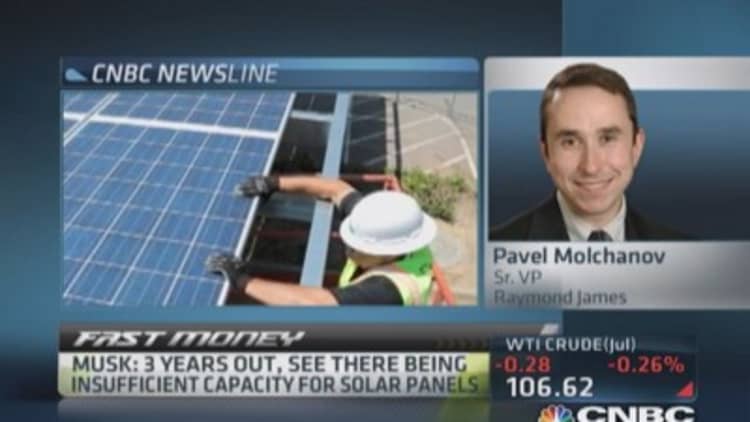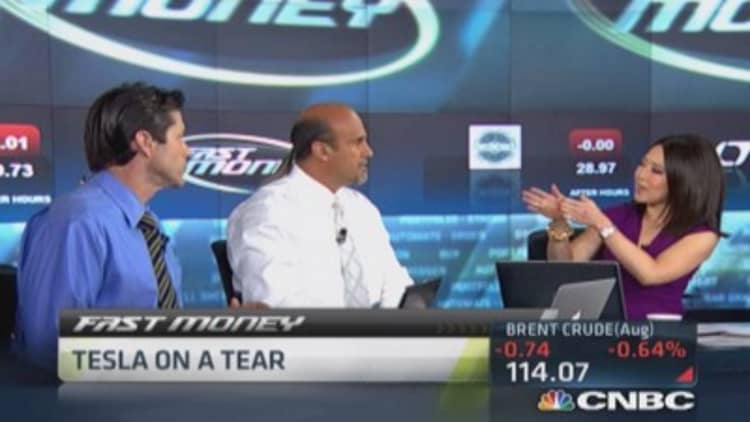The only sector as prone to booms and busts as old energy is new energy.
The cleantech sector—also referred to as renewable energy or green energy—has experienced intense volatility over the past several years. That's not surprising for a relatively new sector of the economy. Forecasting supply and demand in the early days of any industry is tough. The booms and busts in the cleantech sector, in particular, have offered hedge funds plenty of "short" profit-taking opportunities, while the longer-term-minded green investors have needed a strong stomach to ride out the ups and downs.
But that's the history. What has the attention of the cleantech experts now is how various niches within cleantech have begun to define themselves and, in some cases, offer steadier, less-risky returns than the catchall cleantech sector has been associated with historically. ETFs are one way to investigate and then invest in cleantech stock plays, and it is an investing theme that has a growing audience.
No one should expect volatility in the cleantech sector to disappear. In fact, it shows few signs of slowing: After generating a return of 33 percent in the past one-year period, the bellwether Cleantech Index has barely budged so far this year, with a modest 3 percent return.
That broad-based index is the basis for the PowerShares Cleantech Portfolio ETF (PZD), and when you look at the top holdings, it becomes clear why the ETF has stalled this year. Almost 60 percent of the ETF is in industrials stocks—companies including European industrials giants Schneider Electric, ABB and Siemens. Its performance last year and this year, in fact, track closely with industrials indexes and industrials ETFs, including the Industrial Select Sector SPDR (XLI).
Read MoreAging stinks, so you should at least profit from it
Neena Mishra, ETF research director at Zacks Investment Research, likes diversified cleantech plays, including PZD, because each company makes up no more than 4 percent of the portfolio and the ETF can focus on growing demand for clean energy in emerging markets.
Chat Reynders, CEO of Reynders, McVeigh Capital Management, also likes the mix of global companies in the PowerShares ETF.
It's a small world (of big cleantech companies)
It's important to note that more than half of the ETF is invested in companies that are industrials operating in niches outside a pure-play cleantech company.
Take the difference between two of its top holdings, Schneider Electric and Vestas Wind Systems, both European cleantech companies. Vestas is a pure play on the wind energy market; Schneider is a diversified industrial with a focus on energy efficiency, but it brings that focus to sectors such as the oil-and-gas and mining markets.
A global view is important, said Rafael Coven, managing director of the Cleantech Indices, and the Schneider Electrics and Siemenses of the world can tap those global opportunities. There are about 1,100 companies worldwide that Cleantech Indices defines as fitting its universe, and most of them are very small and, as a result, more risky than the larger industrials.
There’s a great deal of variability within cleantech. Some stocks have more than doubled, and others are down 50 percent or more. ... This is a dynamic and rapidly changing niche. It’s not for very investor.Pavel Molchanovenergy analyst at Raymond James
Big companies are making massive cleantech investments to improve building efficiency or to create cleaner ways of manufacturing, so the role of the industrials and utilities in the future of cleantech is large. Smart grid investments have a bright future, Coven said, because "U.S. companies are just now learning to manage energy efficiently."
"There's a great deal of variability within cleantech," said Raymond James energy analyst Pavel Molchanov. "Some stocks have more than doubled, and others are down 50 percent or more."
Hazardous labels
Labeling of ETFs doesn't tell an investor nearly enough, and there's another good example of cleantech ETFs that are really making big investments in some older, larger companies in a transitional era.
Nuclear energy stocks, for example, have been stuck in neutral (if that lucky), but nuclear energy ETFs have not fared poorly at all. The iShares Global Nuclear Energy ETF (NUCL) and Market Vectors Uranium + Nuclear Energy ETF (NLR) are up more than 7 percent year-to-date and 23 percent in the past year. That may not make much sense when you consider the performance of the Global X Uranium ETF (URA), a bet on the future increase in the need for nuclear fuel rods, which is down 16 percent in the past year, but the nuclear ETFs from iShares and Market Vectors hold broad utilities as their top holdings, and the utility sector has been on a tear this year, tying energy for top returns among S&P 500 sectors.
Read MoreHave an investing idea? Build your own ETF
Reynders' other pick has a focus on smaller cleantech companies: the PowerShares WilderHill Clean Energy Portfolio (PBW). Small-cap stocks make up more than 60 percent of the fund, and only 22 percent of the ETF is in the industrials sector. Small-cap stocks only make up 26 percent of PZD.
PBW includes geothermal companies, along with water, sun and power companies, Reynders said, making it a diversified option. One typical holding is Maxwell Technologies, which sells energy storage and power delivery across industries, including heavy-duty transportation and automotive. It has a market cap of near-$500 million and a stock chart from 2012 and 2013 that is not for the faint of heart.
Mishra likes the First Trust Nasdaq Clean Edge Green Energy ETF (QCLN), which has a larger average market cap and focuses to a greater extent on some of the most popular U.S. clean energy stocks—ranging from solar companies First Solar, SolarCity, SunPower and SunEdison to electric-car company Tesla Motors and LED lighting company Cree—all of which are among its top 10 holdings and comprise 36 percent of the ETF. As the top-holdings list suggests, this ETF provides significant exposure to one of the two biggest trends in cleantech: solar installations.
Solar and wind could be called the old guard of the new energy companies, and they've definitely acted over the past decade in the way new industries do: big peaks, deeper valleys. For instance, the First Trust Wind Energy ETF (FAN) is up 16 percent year-to-date and more than 64 percent in the past year, but its all-time return since launch in 2008: negative 57 percent. The Guggenheim Solar ETF (TAN) is up 26 percent this year and 100 percent in the past one-year period, but its all-time return since launch in 2008: negative 83 percent.
If it didn't pay to be early and stay committed in clean energy investments, maybe the time has finally come for the long-term investor.
A doubling in renewable energy by 2030
The International Renewable Energy Agency has estimated that global energy from renewables will rise from 18 percent in 2014 to 36 percent in 2030, while also lowering energy costs. And analysts see promise in solar investments, in particular.
Solar demand is picking up in Japan and in the U.S. "Solar is on the comeback trail," Reynders said, "and prices have stayed pretty steady." He points to pricing in the solar panel market, which ran many manufacturers of panels to the brink of bankruptcy a few years ago. He said the solar industry is growing up, and trends in commercials retrofitting and leasing programs for solar installations are helping to spur growth and stock runs for solar installation companies, including SolarCity and SunEdison.
Read MoreA warning from the father of the VIX volatility index
Wind power can also stand on its own without government subsidiaries, which have been key to the early growth of the solar and wind industries. Reynders said solar has wider applications and will be more central to energy planning; however, it's important to remember that both solar and wind are cyclical investments and less-diversified investments than the global industrials companies targeted renewable growth and energy-efficiency efforts. "They are capital goods companies that flow with general economic cycles—and regulatory ones, too," Reynders said.
Coven said less-established technologies, like fuel cells and biofuels, remain more experimental, and he would shy away from any ETF that has too great a focus on these cleantech pure-plays. "Biofuel plants require massive investments," he said. "And most companies are years away from being competitive."
If the stock market rolls over again, all bets are off for all high-risk investments like cleantech. "This is a dynamic and rapidly changing niche," Molchanov said. "It's not for very investor."
—By Constance Gustke, special to CNBC.com







